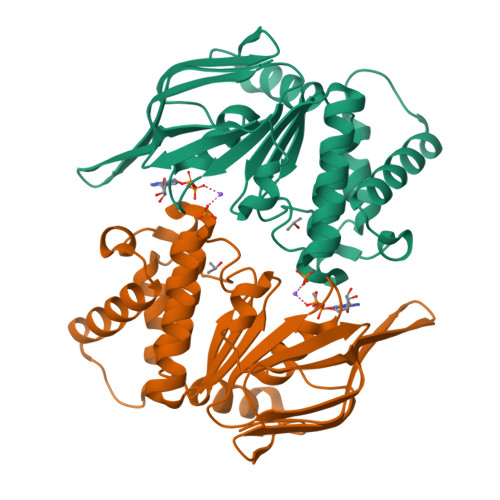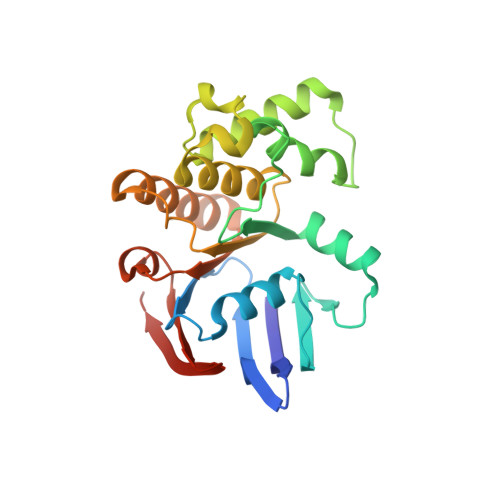Kinetics of the association/dissociation cycle of an ATP-binding cassette nucleotide-binding domain.
Zoghbi, M.E., Fuson, K.L., Sutton, R.B., Altenberg, G.A.(2012) J Biological Chem 287: 4157-4164
- PubMed: 22158619
- DOI: https://doi.org/10.1074/jbc.M111.318378
- Primary Citation of Related Structures:
3TIF - PubMed Abstract:
Most ATP binding cassette (ABC) proteins are pumps that transport substrates across biological membranes using the energy of ATP hydrolysis. Functional ABC proteins have two nucleotide-binding domains (NBDs) that bind and hydrolyze ATP, but the molecular mechanism of nucleotide hydrolysis is unresolved. This is due in part to the limited kinetic information on NBD association and dissociation. Here, we show dimerization of a catalytically active NBD and follow in real time the association and dissociation of NBDs from the changes in fluorescence emission of a tryptophan strategically located at the center of the dimer interface. Spectroscopic and structural studies demonstrated that the tryptophan can be used as dimerization probe, and we showed that under hydrolysis conditions (millimolar MgATP), not only the dimer dissociation rate increases, but also the dimerization rate. Neither dimer formation or dissociation are clearly favored, and the end result is a dynamic equilibrium where the concentrations of monomer and dimer are very similar. We proposed that based on their variable rates of hydrolysis, the rate-limiting step of the hydrolysis cycle may differ among full-length ABC proteins.
Organizational Affiliation:
Department of Cell Physiology and Molecular Biophysics, Texas Tech Health Sciences Center, Lubbock, Texas 79430-6551, USA.























